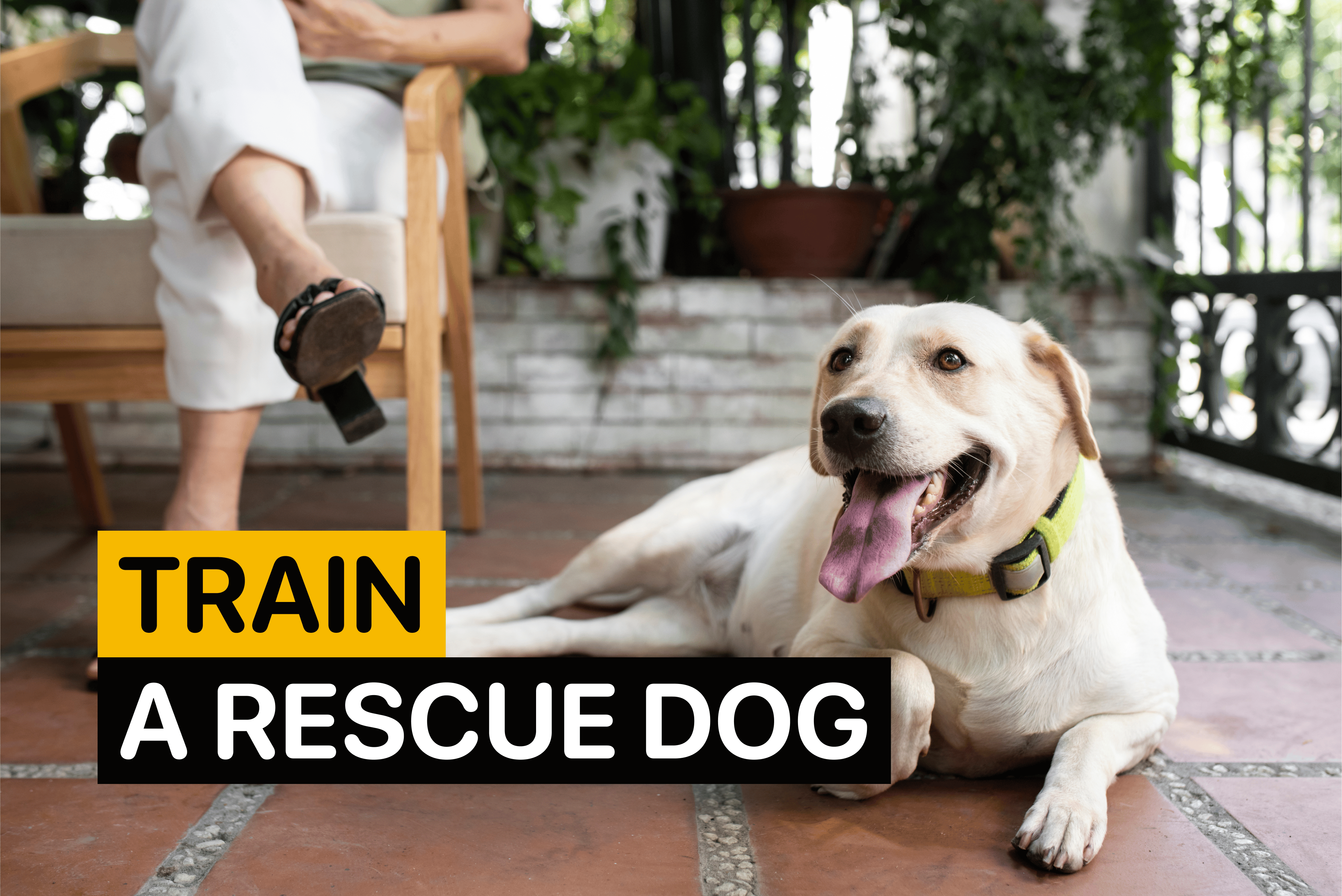Ultimate Guide to Dog Care: 13 Essential Dog Care Tips

By
Woofz Team Updated on |Reviewed by
Karen PiwinskiWhen you decide to bring a furry family member into your household, you're probably thinking about all the joy and happiness having a dog brings. However, owning a pet is also about your commitment, which comes with a set of responsibilities. What do we, as dog parents, owe to our pets? Taking good care of them is one of the essential elements of sharing your life with a dog.
If you're wondering how to care for a dog correctly, this blog post is an excellent starting point on your journey. Let’s break down what proper care for a dog looks like.
13 Tips on How to Take Care of Your Dog
Any responsible pet parent must ensure their companion’s needs are met. And we’re talking about plenty of aspects to cover – from good nutrition, health checkups, and quality playtime to taking precautionary safety measures. We’re offering you a brief overview of the most essential elements of dog care.
1. Healthy nutrition
The well-being of your pet starts with a well-balanced diet. It’s unrealistic to expect your pooch to be a happy-go-lucky dog if they don’t get enough nutrients from their daily meals. Whether you decide to offer kibble, canned, homemade, or raw dog food, make a point of consulting a vet to choose an appropriate brand or develop a nutrition plan that will be adequate for your dog’s age, size, and activity level.
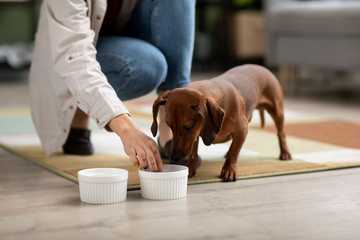
Another essential thing to consider is avoiding food that is toxic to canines. Many common ingredients, such as chocolate or raisins, can be harmful to dogs. Additionally, it’s your responsibility as an owner to monitor their daily calorie intake to prevent obesity and other health issues associated with being overweight.
2. Regular exercise
Depending on your dog’s age, breed, and energy levels, they may require different levels of daily activity and varying amounts of exercise. Still, having a consistent exercise schedule is crucial. Any dog needs at least 30 minutes of physical activity daily.
You should take your canine companion on a walk at least once a day (the more, the better). However, you can also vary the type of activities you do by offering your canine companion the opportunity to play games, giving them off-leash time, or practicing commands outdoors. All of these will help your pet maintain muscle mass and receive the necessary mental stimulation.
3. Grooming
Taking good care of your dog’s coat means regular grooming and bathing. How often you will have to groom your dog mostly depends on the breed and the type of hair coat. Canines with short coats require less frequent grooming sessions, which mainly consist of brushing to remove dead coat. While medium and long-coated breeds also need trimming and other extras. Your groomer can suggest a grooming schedule.

Bathing your furry companion can be a challenging task. You must pay extra attention to the product you use, as some low-quality shampoos can have a damaging effect on your dog’s skin or even cause damage to their coat. Consulting a professional before establishing your pet’s bathing routine is advised.
4. Veterinary care
Regular vet visits are the foundation of a pet’s healthy life. They help prevent various diseases or diagnose them early, which contributes to more effective treatment. Adult dogs must see a vet annually for routine health checkups, while senior canines benefit from more frequent visits, as they may suffer from chronic conditions.
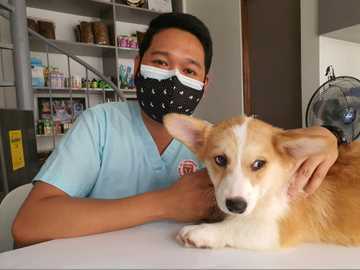
A crucial factor influencing your dog’s health is their vaccination status. Vaccines are safe and effective for preventing a range of infections, including parvovirus, hepatitis, leptospirosis, and many others. Depending on your location and lifestyle, your vet can advise on specific vaccines your pet requires.
5. Safe environment
To keep your dog safe, especially if you leave them home alone for an extended period, you must ensure their environment is hazard-free, comfortable, and meets your pet’s needs. Whether we discuss indoor or outdoor spaces, there are specific rules you have to follow.
Pet parents must allocate a specific area where their companion can spend time without risk to their health and well-being. You can introduce them to a crate or use a baby gate to limit the area they can walk safely. If you let your dog out, ensure the yard is fenced so that there’s no possibility of escape.
Next, make sure the place your pet is staying is not too cold or too hot. Your dog should also have access to fresh water and food, which should be placed in bowls made of safe materials. You can also place toys to create positive associations with the spot where they spend a lot of time.
6. Training and socialization
Your furry best friend will benefit from basic obedience command training. Dog training is key to a more peaceful co-existence and improved safety for your pet. Therefore, it’s recommended to start training your pup from an early age (around 8 weeks), although adult dogs can also be trained.
Another vital skill you must teach is proper socialization. Pet parents should take their dogs to various places, gradually exposing them to different environments (like a dog park), where they can meet other people and pets and experience a variety of stimuli.
7. Bonding
Canines are social animals that thrive on interaction.

Be intentional about spending quality time with your furry friend, as this will have a positive impact on their mental well-being. Playing together can also be a great source of physical and mental stimulation.
8. Breed-specific needs
Pet parents must become familiar with their dog’s breed needs. Due to different genetic makeup, each breed’s needs in terms of exercise, nutrients, and socialization vary. In addition, you may face breed-related behavioral issues that will require you to train your companion in a specific way.

One of the most important aspects of looking after a specific dog is the health issues associated with their breed. Thus, smaller dog breeds often require more dental hygiene to prevent dental problems. Larger breeds are prone to gaining extra weight and hip dysplasia, resulting in related health issues.
9. Protection from parasites
Parasites are a common issue for canines, and it’s one of those problems that can be prevented effectively. Use year-round preventative medication against fleas and ticks. Also, follow your vet’s advice on deworming and vaccinations. Finally, always keep the space your pooch lives in clean and regularly groom and bathe them.
10. Mental stimulation
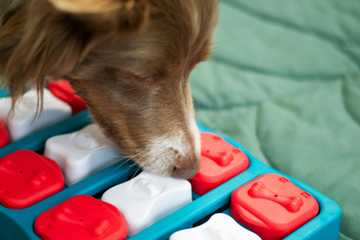
Keeping your furry companion’s brain busy is crucial not only for their emotional well-being but also for reducing their boredom, which leads to less destructive behaviors. Regular training, interacting with puzzle toys, or playing games with you (like hide and seek) work great for entertaining your pooch. Even a simple walk outside can enrich your canine companion’s daily experience.
11. Cleanliness
Pet parents are the ones responsible for cleaning up after their dogs. When you take your furry best friend on a walk, be sure to always have poop bags with you. Cleaning up after your pet is necessary for several reasons. It contributes to the general cleanliness of sidewalks and parks. But what matters even more is that cleaning is a preventive measure against the spread of diseases.
12. Dental care
All pet parents must pay close attention to their dog’s teeth and oral hygiene. Neglecting your pet’s dental health can result in serious health issues that can negatively impact the overall well-being of your furry friend. You can achieve a proper level of dental health through various means.
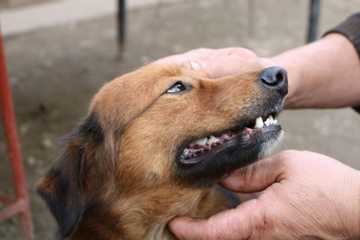
First, schedule regular veterinary checkups to prevent any dental issues, or act early if you notice them. Second, follow your vet's professional dental hygiene suggestions and brush your dog’s teeth regularly to keep them healthy. Finally, for canines prone to plaque issues, stick to dry kibble to prevent plaque from sitting on the teeth.
13. ID and microchipping
Crucial for your dog’s safety, microchipping involves implanting a small chip under your dog’s skin with a unique identification number. This ID helps track the owner and return the lost dog to their home. The chip itself is small, and the installation process resembles a vaccination procedure.
One of the most significant benefits of microchips is that they’re permanent and enable quick identification of the owner. This feature is beneficial for pet parents whose dog is prone to escaping. Knowing your pooch can be identified and brought back home can provide you with much-needed peace of mind and confidence in the safe return of a wandering pet.
Wrap Up
All pet parents must understand that owning a dog comes with a set of responsibilities. You should meet your pet’s dietary needs, provide sufficient physical and mental stimulation, and arrange for proper grooming and vet care. Though these duties may seem time-consuming and tiring, the result will be a happy and well-adjusted companion who will make your life more exciting for many years to come!

